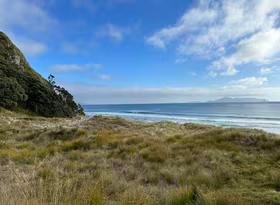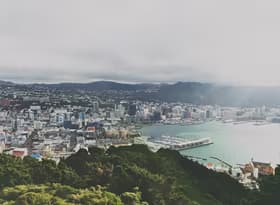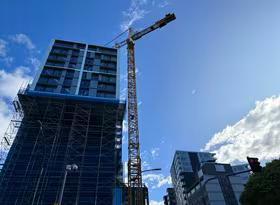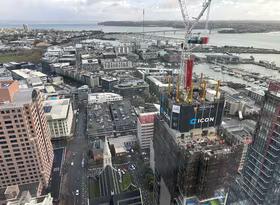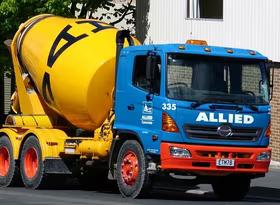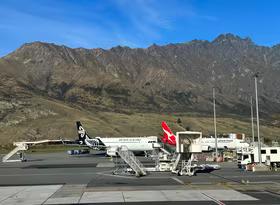Don’t just build hotels, embrace private accommodation
New Zealand's golden summer of tourism has highlighted bottlenecks in visitor infrastructure at peak times, particularly in the commercial accommodation sector where occupancy rates are at record levels. Not surprisingly, the market has responded swiftly, with demand for private accommodation through peer-to-peer (P2P) providers, such as Airbnb, soaring – growth that has come despite staunch resistance from hoteliers and councils. This article presents the case for further embracing P2P accommodation provision as part of the longer-term solution to managing peak load in the New Zealand tourism sector.
Guest nights across all forms of commercial accommodation this summer were up 6.4% from a year earlier, driven by an 8.4% lift in guest nights by international visitors, while domestic visitor guest nights climbed 4.9%. This lift led to sharply higher occupancy rates, particularly in hotels and motels, where occupancy through the summer averaged 71%, compared with the long-term summer average of 62%.
High levels of hotel and motel occupancy were particularly apparent in key tourism hotspots, such as Auckland (80%), Rotorua (79%), and Queenstown (87%), where occupancy was 10-16 percentage points ahead of long-term averages.
With spare rooms hard to come by, hoteliers also pushed up their prices. According to Statistics New Zealand’s Consumer Price Index, the price of accommodation across the first quarter of 2016 was up 4.8% from a year earlier. In comparison, prices in general in New Zealand were up a mere 0.4% on a year earlier.
But the really interesting part of the story is that, despite this boon for hoteliers, the lift in commercial accommodation demand this summer has not even come close to catering for the influx of foreign visitors to New Zealand. Over summer there were an average of almost 39,000 additional visitors arriving at airports each month than a year ago. In total, this influx translated into potential demand of around 700,000 additional international visitor guest nights each month, based on the assumption from the International Visitor Survey that the average visitor stays for around 18 days.
However, data shows that commercial accommodation only accounted for an additional 140,000 international visitor guest nights each month.
Aside from crashing at a mate’s or parking up by a beach, one of the forms of accommodation to make up some of the shortfall has been private accommodation, through P2P providers such as Airbnb or old hands at the game, Bookabach. These providers efficiently match travellers up with vacant rooms or homes offered by private parties in a way that can be seen as a direct substitute to commercial accommodation.
How many people use private accommodation?
Getting a true handle of the size of this sector is a little tough, given the P2P providers are understandably a little cagey about trumpeting from the rooftops just how much loot they are bringing in. Furthermore, government departments and statistical agencies are yet to facilitate a satisfactory way of measuring the sector.
Nevertheless, there are some rough estimates that can be derived from the recent growth trajectory in New Zealand by global market leader, Airbnb. According to the company, the number of Airbnb listings in New Zealand has risen to just over 12,000, more than double where it was a year ago a year ago. The company has also claimed that the average New Zealand host brings in $7,100 per annum.
Taking these figures, in conjunction with an assumption that the average Airbnb listing goes for $120 per night and has an occupancy of 1.7 people per listing (as is the average for commercial accommodation) suggests that there could be as many as 1,200,000 Airbnb guest nights on an annualised basis in New Zealand at present.
International visitors would account for around 490,000 of these Airbnb guest nights if they made up the same proportion as they do in commercial accommodation. To put this number in perspective, commercial guest nights by international visitors totalled around 15,000,000 over the past year.
Assuming Airbnb demand experiences the same seasonal pattern as commercial accommodation then this estimate translates to an average of just over 60,000 Airbnb guest nights by international visitors each month over the summer just been. This total is likely to have risen by around 30,000 per month since last summer, given that Airbnb listings have more than doubled over the past year.
Growth such as this is not insignificant, but still nowhere near enough to make up for all of the additional guest nights by visitors to New Zealand this summer.
Of course analysing other P2P accommodation providers, such as Bookabach, could help further explain some of the shortfall, but the data needed to gain such insights is not available. Even so, at least these estimates give a ballpark as to how much additional accommodation supply was brought into the market by Airbnb over the past year.
P2P accommodation growth potential
With this growth in mind, let’s now think about the potential for P2P accommodation providers to grow further and why I am convinced that P2P accommodation provision should form a key part of helping sustainable grow New Zealand’s tourism sector over the coming years.
The 2013 Census provides a fruitful hunting place for insights into the potential stock of housing that could be used for private accommodation. For example, on Census night there were 185,445 unoccupied homes and baches. Although it would be a stretch to say all these unoccupied dwellings could be used for P2P accommodation provision, the data is at least a starting point for investigation.
Even if one out of every twenty-five (4%) of these unoccupied dwellings were made available to P2P providers for an average of 20 nights per month this summer then private homes could have catered for all growth in guest nights in New Zealand without putting any pressure on commercial accommodation.
Furthermore, the resource is often in plentiful supply in key visitor markets, with Infometrics’ estimates showing on average 17% of Queenstown homes were classified as unoccupied during 2015. Other places, such as Far North, Thames-Coromandel, and Marlborough had unoccupied housing rates of 13%, 37%, and 11% respectively. These figures compare to the national average of 6.1%
These are extreme examples, but help to illustrate the potential scale of the unoccupied housing resource out there that P2P accommodation providers can tap into. And all of this is before we even begin to think about homeowners who would be willing to rent out a spare room within a house.
Why P2P accommodation is crucial to tourism’s future in New Zealand
With international visitor flows to New Zealand continuing to push up higher and capacity constraints in the commercial accommodation sector biting, it is time the tourism sector takes this resource seriously and engages with P2P accommodation providers in a meaningful manner.
At present, the rhetoric in the tourism sector is centred around building new hotels, but the problem is that there are long lead times between project idea and when the capacity is commissioned. In the meantime, P2P accommodation is already stepping in and picking up some of this slack.
The other important point to consider is that solely putting focus on constructing hotels is not necessarily the most efficient way to accommodate visitors. After all, hotels are an extremely capital intensive investment, and apart from peak summer months, have relatively low occupancy the rest of the year.
Private accommodation, on the other hand, makes use of an accommodation resource that is already there, but is simply underutilised. By matching this underutilised housing, with paying guests, P2P accommodation providers are allowing New Zealand to leverage up its housing return and more efficiently make use of capital.
I am not saying not to build any hotels, I am just asking for some balance in the debate, and an acceptance that P2P accommodation provision is a sensible component to managing future growth in the New Zealand tourism sector.
The problem is though that P2P accommodation providers are treated to a predictable chorus of complaint from the commercial accommodation sector who argue an unregulated market place will deliver inferior experiences.
But these complaints have little substance as there are a number of ways that a consistent visitor experience can be brought into the P2P accommodation space.
Firstly, P2P providers already self-regulate themselves, with a peer reviewing system that effectively pushes private households into ensuring they deliver a quality experience. If someone gets bad reviews, either they will need to lift their game, or the market will squeeze them out.
Secondly, there is nothing ruling out councils, regional tourism organisations, and government departments (such as MBIE) working together to draw up a framework for supporting private accommodation providers. For example, regular training workshops could be run for households looking to list via a P2P accommodation provider that focus on what is needed to provide a high standard of service to visitors. A key part of this training would also be ensuring that households had access to local resources, so that they could assist their visitors in knowing what range of visitor activities were on offer in their area.
Of course though, there is one dimension that isn’t helping, and that is that many councils are worried about the impact on their bottom line of encouraging private accommodation. Councils can partly offset visitor pressure on local infrastructure by appropriately setting rates for commercial accommodation providers, but moves to do so in the private accommodation space have previously been unsuccessful (eg. Thames-Coromandel’s mooted bach tax).
However, this problem need not be a stumbling block. Internationally, Airbnb already collects bed taxes in some jurisdictions. If councils called a truce, and jointly lobbied government to pass a law allowing for a small bed tax to help fund local visitor infrastructure, then even this long-standing issue could be overcome.
Tourism sector stakeholders simply need to get communicating and taking the P2P accommodation movement seriously, rather than pigeon holing it and sticking to the status quo of focusing solely on the commercial accommodation space. If we are going to continue delivering a wonderful visitor experience to a growing number of visitors, it’s time we get imaginative about delivering efficient solutions to tourism infrastructure bottlenecks.
